Today DN15 turns 123 days old and DN16 turns 122 days old. How much longer will it be before they disperse?
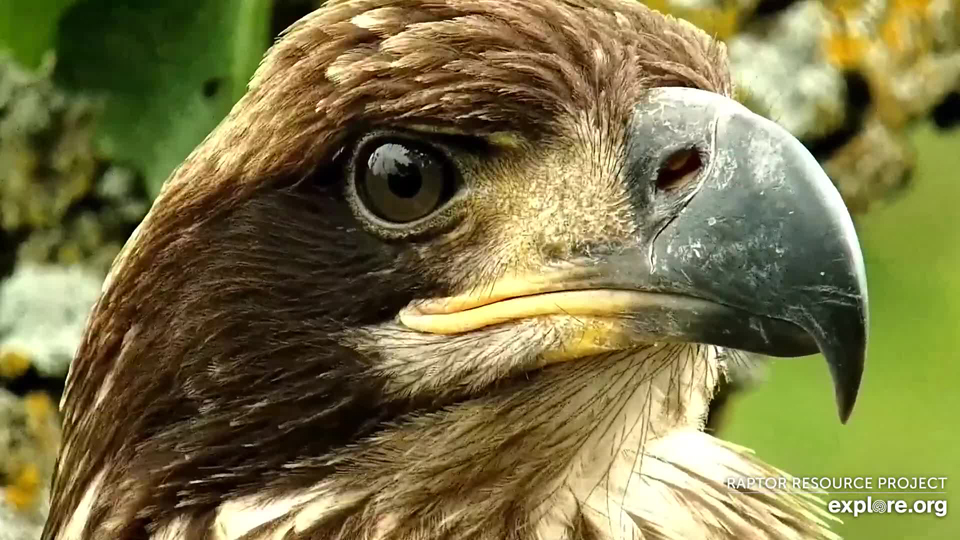
July 25, 2022: DN15 on the babysitting branch at the North Nest
To date, we’ve tracked eight Decorah eagles with satellite transmitters: D1 beginning in 2011, D14 beginning in 2012, Four beginning in 2014, siblings D24 and D25 beginning in 2016, D27 beginning in 2017, and siblings D35 and D36 beginning in 2020. While a few of them did things their own way, most of them stayed within a mile of the nest for a month following fledge. After a month, they began ranging out on exploratory flights, although they returned to the nest occasionally. Their age at dispersal averaged 162 days, which DN15 will reach on September 4 and DN16 will reach on September 5. Their visits to the nest and nest tree have started to diminish and their early attraction to ‘log island’ has disappeared, although we’re still seeing them in and around the area and the nest remains a popular place for dinner drops and food fracasses!
Looking for something else to watch?
Looking for something else to watch? Decorah Trout Hatchery Eagles HM and HD are continuing to perch on the Y and work on N1, which seems like an excellent sign of eaglets to come. Talons crossed! The Mississippi Flyway is heating up as birds start gathering in pre-migratory flocks and preparing for the longer, more leisurely fall migration. Right now we’re watching sandhill cranes, ducklings, egrets, cormorants, great blue herons, magnificent sunrises, and the occasional bald eagle…but it won’t be long before eagle college is in session! We’ve also got a camera on the Flyway at Eagle Valley and the little turkey vultures haven’t fledged yet, although don’t wait too long to watch them, since fledge isn’t far away!
Thanks so much for watching, sharing, learning, and especially for caring. We hope you enjoy these videos as much as we did!
Decorah Trout Hatchery Eagles
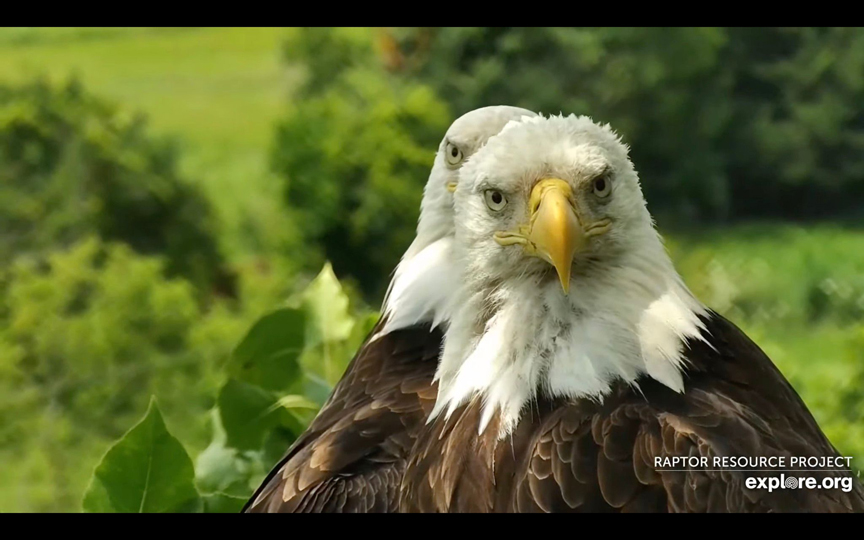
July 22, 2022: HM and HD on the Y-Branch
July 22, 2022: HD joins HM on the Y, both vocalize – https://youtu.be/G1dm739MJdk. One of my very favorite views, two wonderful eagles, and some very nice close-ups!
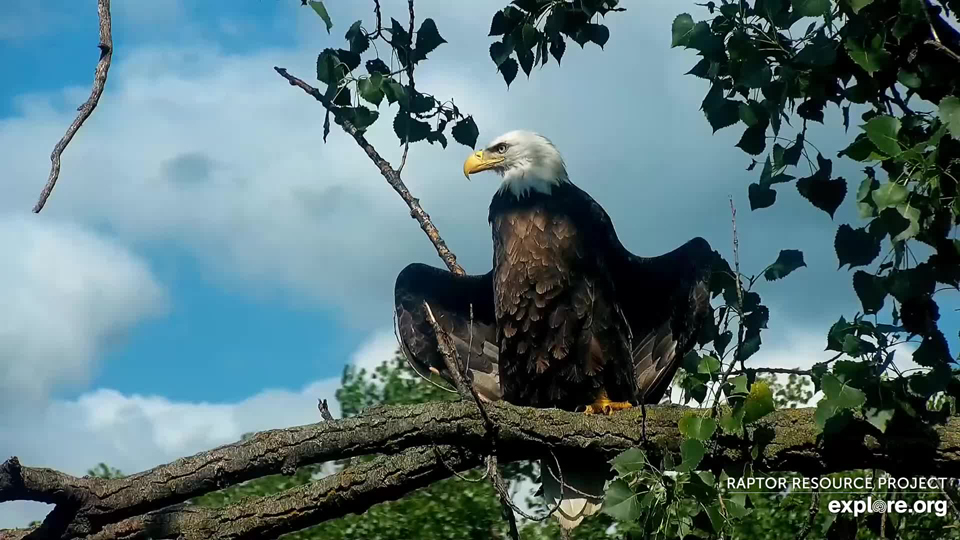
July 26, 2022: HM sunbathing near N1
July 22, 2022: HM on the Y-Branch – https://youtu.be/Eqd9sDTPDmU. It’s high summer and the eagles have been molting and coping with blackflies. But HM looks lovely in the dappled shade of rustling cottonwood leaves as she catches a little breeze on the Y-branch.
Decorah North Eagles
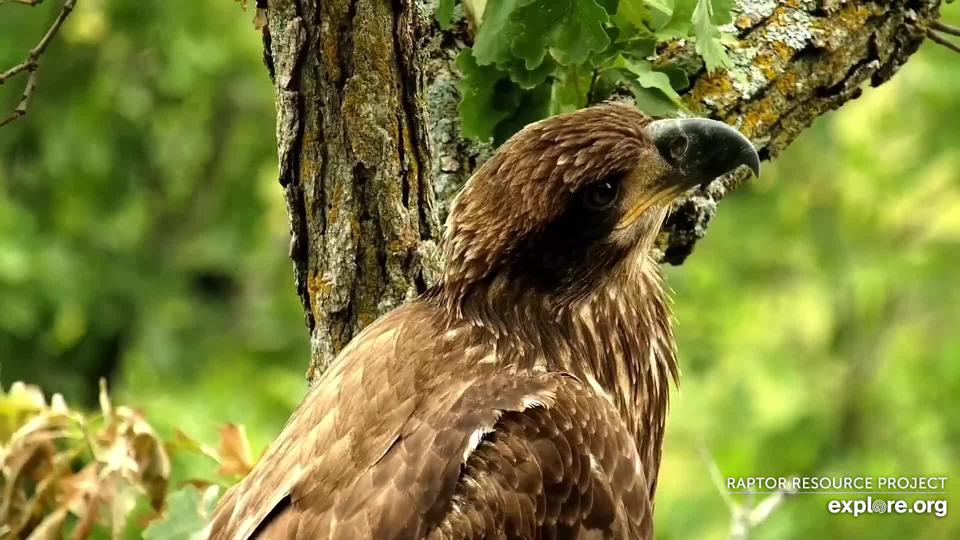
July 23, 2022: DN15 near the North Nest
July 25, 2022: Gorgeous closeups, DN16 then DN15 – https://youtu.be/5HqQ-Rd0ugw. Watch closely at about 18 seconds and you’ll steam rising from DN16’s mouth as she vocalizes! Why is DN16’s breath condensing in July? The temperature and dew point where both (relatively) low and DN16’s exhaled air was 5% or more above the surrounding humidity of the air. We get close-ups of DN16 starting at 26 seconds and of DN15 on the babysitting branch at 4:50.
July 24, 2022: Food drop, eaglets get tangled up in the fray – https://youtu.be/pm4TP-faM8w. The food fracas start with Mr. North’s arrival at 1:08! DN15 (I think) falls off the nest at 1:17 but circles back. DN16 has learned her eagle manners well: she mantles, squees, and gorges down a late breakfast while DN16 flies off to try its luck elsewhere!
What is that in the North nest? It’s hemp! Sherri Elliott wrote a great blog about it back in 2019: https://www.raptorresource.org/2019/06/02/what-are-those-weeds-growing-in-the-decorah-north-nest/. Our Iowa eagles are quite the farmers…
July 24, 2022: Northern Flicker visit: https://youtu.be/aqIwEa2QsmM. Cornell tells us that ants are a Northern Flicker’s main food source. Although it can hammer on wood, it prefers to forage on the ground, lapping up ants with its long, barbed tongue. Decorah North provides ideal habitat: open ground for ground-based foraging, a great mix of dead and live wood for nesting, and plenty of ants. Carpenter ants build nests in damp, dead wood, which would make them easy pickings even for woodpeckers that don’t prefer hammering for their food.
What’s in a name?
You might have known this bird as the yellow-shafted flicker, especially if you grew up in the Midwest. At one point, the red-shafted flicker of the American west and the yellow-shafted flicker of the American east were considered separate species. But yellow and red-shafted flickers breed with one another and produced fertile offspring, which makes them one species, not two (species definition from the Oxford dictionary: “a group of living organisms consisting of similar individuals capable of exchanging genes or interbreeding”). Ornithologists reclassified them as one species (Northern Flicker [Colaptes auratus]) with two color variations: red and yellow. My 1977 Audubon Field Guide lists the common name as ‘Common Flickers’, and the scientific name as Colaptes auratus, which means roughly ‘golden chisler”.
Mississippi River Flyway
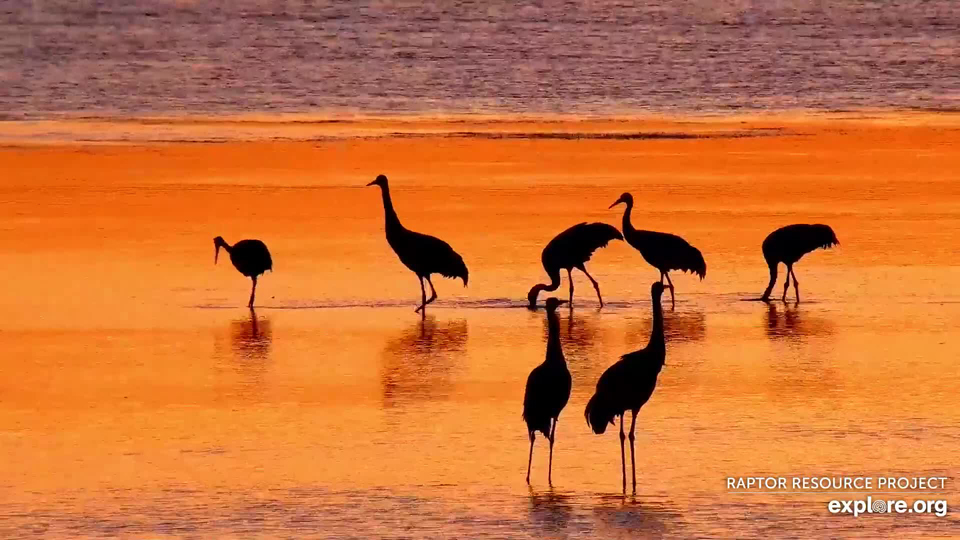
July 26, 2022: The river flows russet and lavender as sandhill cranes greet the morning sun
July 25, 2022: Spectacular sunrise – https://youtu.be/XnrEB3fX1UY. An spectacular riverscape with sandhill cranes, ducks, red-winged blackbirds, and lovely orange light.
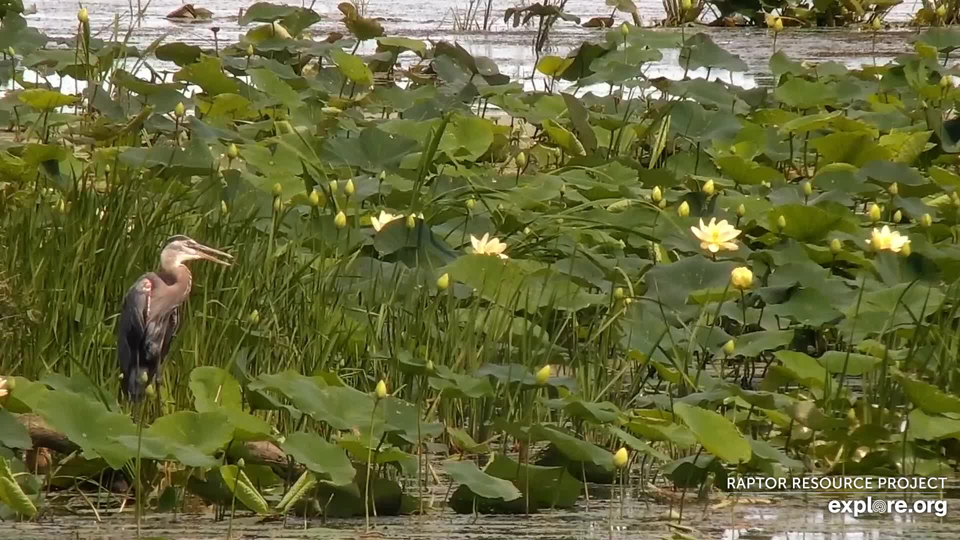
July 25, 2022: A Great Blue Heron and water lilies.
July 25, 2022: Mississippi River Cam Frog and something next to it – https://youtu.be/BASSPn7jHuM. A Northern Leopard frog basks in duckweed, one of the world’s smallest flowering plants. I think that dark object next to it is a snail.
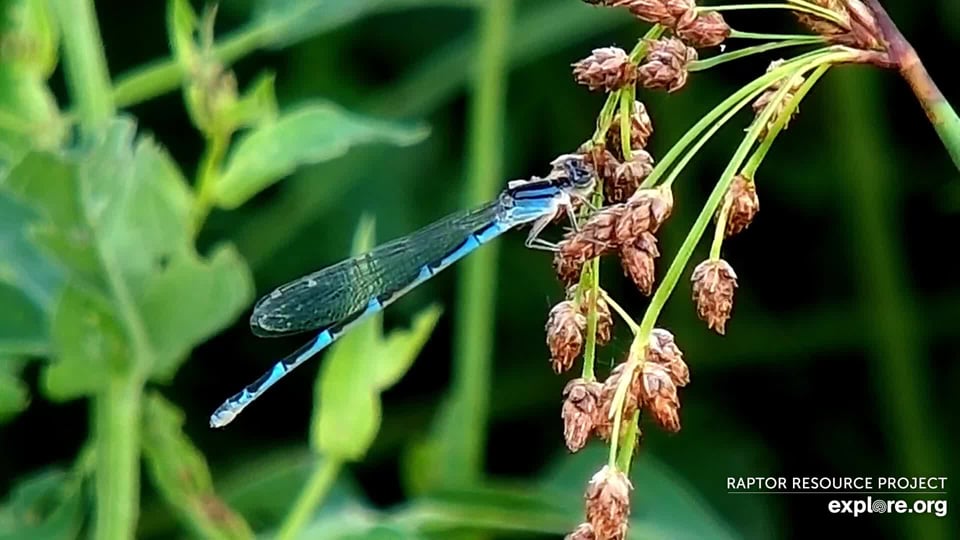
July 26, 2022: A bluet on the Flyway.
July 22, 2022: Nine ducklings – https://youtu.be/pAb1rD_ZPrY. Jack, Kack, Lack, Mack, Nack, Ouack, Pack, Quack, and Rack are keeping their attentive mother busy as she leads them through shallow water foraging grounds. Make way for ducklings!
I’m not sure what kind of duck this is – female Anas especially are a challenge to my duck ID skills and we can’t see its feet or legs. Its bill looks a little too dark for a Mallard – I can’t see any orange whatsoever! – and it puts me in mind of a blue-winged teal. We are happy to hear your ID thoughts!
 The Raptor Resource Project
The Raptor Resource Project The Raptor Resource Project
The Raptor Resource Project